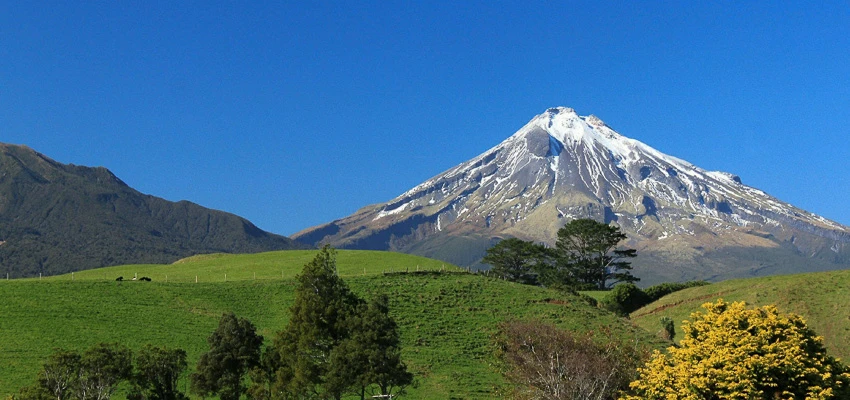Stories of place in Aotearoa NZ

Mt Taranaki by Chris Nicholls. Pixabay. License to use.
Aotearoa New Zealand has a bicultural history with different perspectives and 'stories of place'. Students inquire into the place where they live and discover the features that reveal Māori and/or Pakeha stories.
Concepts
Identity, perspectives, oral history, biculturalism, dominant culture, colonisation, historic significance, bicultural history through place.
He Tohu themes: place, people, living together.
What to do
Discuss stories of place
Discuss the idea that our sense of place is made up of stories associated with a physical location. In every place, some stories have more prominence than others.
Discuss how:
the presence of dominant or well-known stories can be at the expense of other stories being remembered and valued
sometimes this is not accidental.
Get students to conduct a survey of the 'stories of place' that are evident around their town or region. For example, look at stories told by memorials, heritage panels, significant street names, statues, murals, and artworks. Ask students to explore the way the story of the town is documented online.
Categorise stories
Categorise the 'stories of place' such as those about:
the natural environment, including changes over time
the Māori history of the town or region
the Pākehā history of the town or region
Māori individuals and communities
Pākehā individuals and communities
individuals and communities that are neither Māori nor Pākehā
memorials to conflicts such as the First World War.
Explore the concept of 'dominant culture'
Discuss the concept of 'dominant culture' defined as follows:
The dominant culture is a culture that holds the most power, or that is the most widespread or influential within a society made up of multiple cultures.
The dominant culture can often be seen in the established language, values, rituals, religion, and social customs of a group. These traits are often viewed as 'the norm' for the society as a whole.
Conduct surveys to find the strongest stories around your place.
Discuss the extent to which the collective stories of your town or region reflect the presence of a dominant culture.
Who is the person who has lived the longest in your area? What are their stories of the place?
How are the stories different depending on how long someone has lived in your place?
Find people of different nationalities that live in your place. What are their perspectives around the place?
Some useful resources
Topic Explorer:
Land Information New Zealand (LINZ) — place names of Aotearoa New Zealand
New Zealand Curriculum — social sciences
Identity, Culture, and Organisation
Place and Environment
Continuity and Change
Achievement objectives:
